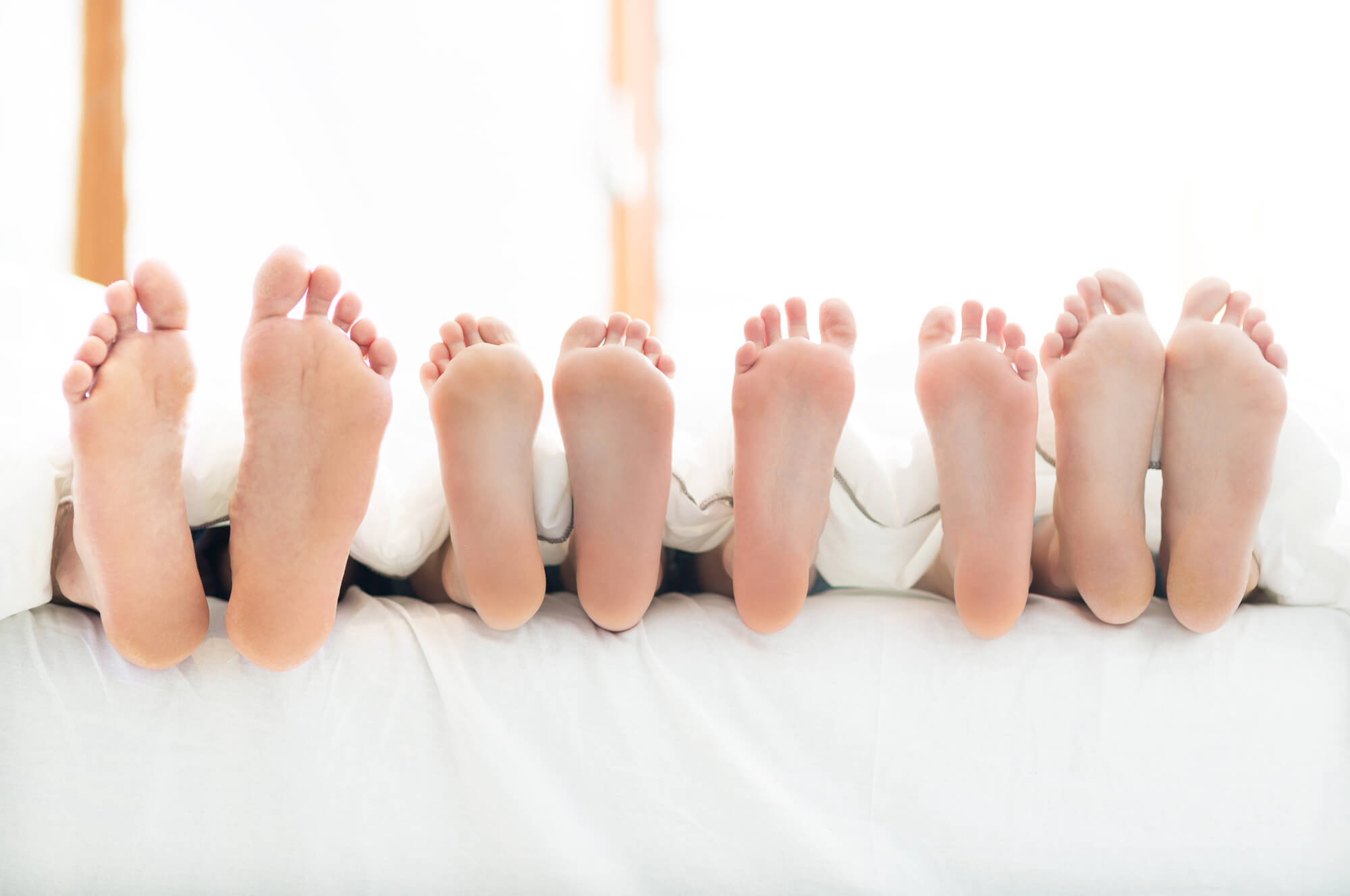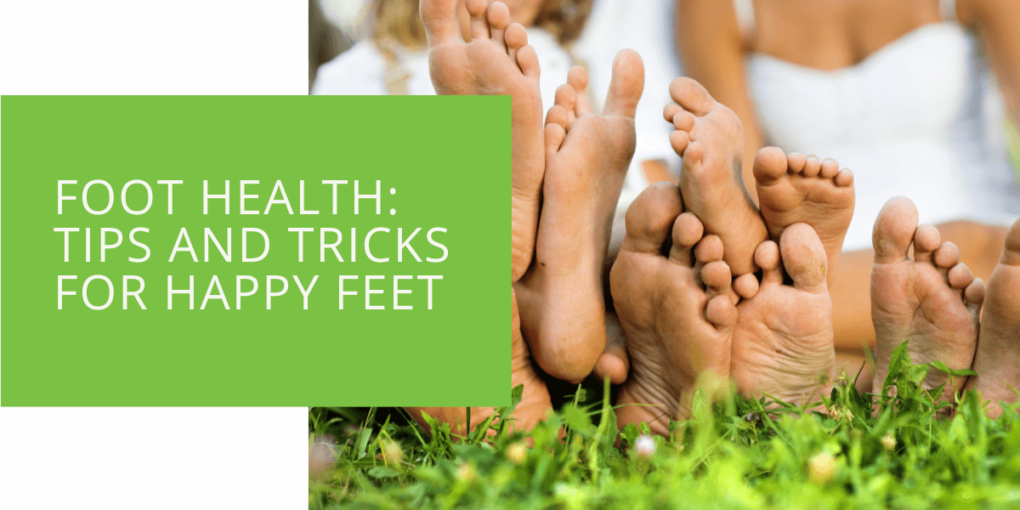Foot Health: Tips and Tricks for Happy Feet
Your feet are more than just a means of transportation; they are the foundation of your body, supporting your weight and absorbing the shock of each step you take. As such, taking good care of your feet and keeping them healthy is important. This article will provide tips and tricks for maintaining good foot health, preventing foot problems, and treating common foot issues.
Foot Care Tips
Proper foot care is key to keeping your feet healthy. Here are some tips for maintaining healthy feet:
Daily Foot Care
- Wash your feet daily with warm water and soap, and dry them thoroughly.
- Apply a moisturizer to your feet daily to prevent dryness and cracking.
- Keep your toenails trimmed straight across, and file any sharp edges.
- Avoid cutting your cuticles, as this can lead to infection.
- Wear socks made of breathable material to prevent moisture buildup.
Footwear
- Choose shoes that fit properly and provide adequate support.
- Avoid wearing high heels or shoes with a narrow toe box for extended periods.
- Wear shoes that are appropriate for the activity you are engaging in.
- Consider using custom orthotics to provide additional support and cushioning.
Lifestyle Factors
- Maintain a healthy weight to reduce the amount of pressure on your feet and ankles.
- Exercise regularly to promote circulation and strengthen your feet and ankles.
- Stretch your feet and toes daily to prevent stiffness and cramping.
Prevention of Foot Problems
- Wear shoes that fit properly and do not cause pain or discomfort.
- Avoid walking barefoot in public places to prevent infection.
- Treat foot injuries promptly to prevent further damage.

Stretching and Strengthening Exercises for the Feet
Stretching and strengthening exercises can help keep your feet healthy and reduce the risk of injury. Here are some recommended exercises:
Toe Flexes
- Sit in a chair with your feet flat on the ground.
- Lift your toes off the ground and hold for five seconds.
- Lower your toes back down and hold for five seconds.
- Repeat this exercise ten times.
Ankle Rotations
- Sit in a chair with your feet flat on the ground.
- Lift one foot off the ground and rotate it clockwise ten times.
- Repeat with the other foot.
- Then, rotate each foot counterclockwise ten times.
Marble Pickup
- Place a marble on the ground and sit in a chair.
- Using your toes, pick up the marble and hold it for five seconds.
- Release the marble and repeat it ten times.
Calf Stretch
- Stand facing a wall with your hands on the wall at shoulder height.
- Step one foot back, keeping your heel on the ground.
- Lean forward into the wall, feeling the stretch in your calf.
- Hold for 30 seconds, and then switch legs.

Common Foot Problems and How to Treat Them
Foot problems can cause discomfort and affect your mobility. Here are some common foot problems and how to treat them:
Calluses
Calluses are thick, hardened skin areas that develop due to repeated friction or pressure on the feet. They can be painful and uncomfortable. To treat calluses, soak your feet in warm water for 10-15 minutes, use a pumice stone or foot file to gently remove the callus, and apply a moisturizer to the area to prevent dryness.
Ingrown Toenails
Ingrown toenails occur when the corner of the toenail grows into the skin, causing pain, swelling, and sometimes infection. To treat an ingrown toenail, soak your feet in warm water for 10-15 minutes, gently lift the edge of the ingrown toenail and place a small piece of cotton or dental floss underneath to help the nail grow above the skin, and apply an antiseptic cream to the affected area to prevent infection.
Bunions
Bunions are bony bumps that form on the joint at the base of the big toe, causing pain and discomfort. They can be caused by wearing ill-fitting shoes or a genetic predisposition. Wear shoes with a wide toe box to treat bunions to reduce pressure on the affected area, apply ice to the bunion for 10-15 minutes to reduce swelling, and take over-the-counter pain relievers to manage pain.
Arthritis
Arthritis is a condition that causes inflammation and stiffness in the joints, including those in the feet and ankles. Various factors, including injury, overuse, and genetics, can cause it. To treat arthritis, take anti-inflammatory medication as your doctor prescribes, apply heat or cold therapy to the affected area to reduce pain and swelling, perform low-impact exercises to strengthen the muscles around the affected joint, and consider wearing custom orthotics or braces to support the affected joint.
Blisters
Blisters are fluid-filled sacs on the skin due to friction or rubbing. They can be painful and uncomfortable. To treat blisters, avoid popping the blister, as this can increase the risk of infection. Cover the blister with a bandage or adhesive tape to protect it from further friction, and if the blister does pop, clean the area with warm water and soap, and apply an antiseptic cream to prevent infection.

When to Seek Professional Help
In some cases, foot problems may require professional podiatric attention. Here are some situations where you should seek the help of a podiatrist:
- If you are experiencing persistent foot pain or discomfort.
- If you notice any signs of infection, such as redness, swelling, or pus.
- If you have diabetes or another condition that affects circulation or nerve function in your feet.
- If you have a history of foot problems, such as a previous injury or surgery.
A podiatrist can provide a thorough foot exam, diagnose problems, and recommend appropriate treatment options.
Conclusion
Your feet are an important part of your body, and keeping them healthy is essential for overall health and well-being. Following the foot care tips, performing stretching and strengthening exercises, and treating common foot problems promptly, you can keep your feet healthy and happy for years. Remember to seek the help of a podiatrist if you are experiencing persistent foot pain or discomfort or have any concerns about your foot health.

